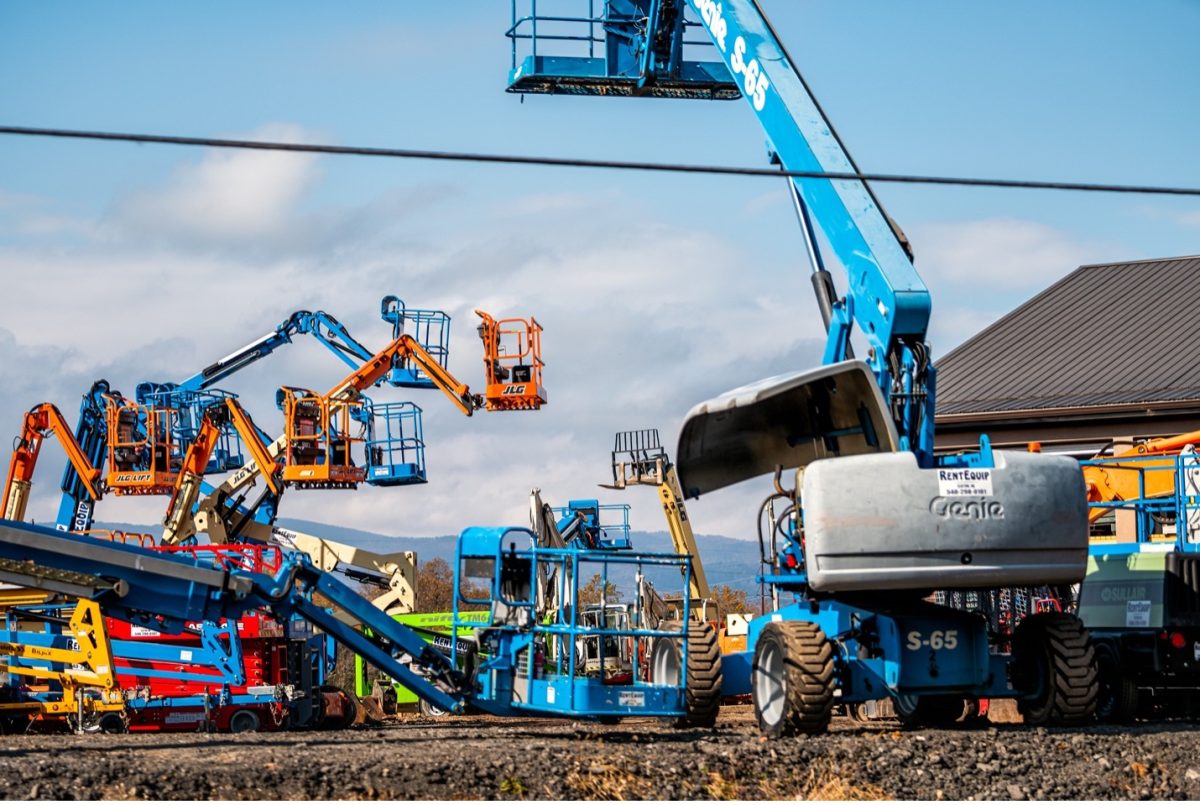Four years ago we moved to the country side and bought an old farmhouse on a large plot of land. Having big construction and landscaping plans we regularly rented all kind of equipment to get the job done. The journey I experienced was tough for the companies that rent out equipment and for my DIY-projects progress. I wish some of these rental companies had state-of-the-art service execution systems, such they could drive both a better customer experience and value delivery.
Job and Equipment planning is tough
The most important thing I’ve learnt in those four years of home improvement is that a piece of rental equipment is ‘just’ a small piece of the planning puzzle. As an example, for my landscaping an element of the work was the relocation of a lot of dirt. For this I needed a (mini) excavator. The availability of the excavator was intricately entangled with ten or more other planning items. You can imagine my surprise/ frustration when the excavator wasn’t available on its due date … and the alternative had only half the capacity.
This is one of many examples I accumulated over four years. As a result I’ve become proficient in reverse engineering the processes of the rental agencies. It’s tough for rental agencies too. If only they had better visibility and planning tools. Speaking of the devil, I happen to work for a company that provides those tools and has implemented them in both business-to-business and business-to-consumer contexts.
The happy path
A rental fleet represents a significant investment so it may sound obvious to know where all that equipment is, and in what state. When you visit a rental yard or a construction site it becomes clear that knowing what-is-where is not that easy. If my personal experiences are representative for equipment visibilty, then WYSIWYG is a rather common implementation.
WYSIWYG works fine when the rental process follows the happy path. Meaning: actual pickup and return date are as planned/ booked; equipment doesn’t break and/or require servicing; no conflicts between availability and demand for equipment.
Going back to my landscaping job and the excavator. With half the capacity, my rental period mathematically doubled. With half the capacity, interlinked activities got pushed out as well causing additional delays. In the end my rental period tripled. Because ‘my’ excavator originally was booked by another customer, the rental agency phoned me in the third week to expedite its return. I was not happy, and certainly I did not pay anymore than the original contracted amount.
Does this sound familiar? Can you imagine how much it costs for a rental agency to mitigate the not-so-happy-path? Cost in headcount and lost revenue generation?
Reducing Turn-Around-Time?
Knowing that a piece of rental equipment is only making money when it is rented out, a key driver is to reduce the so-called turn-around-time (TAT). The time it takes to clean, inspect and service an equipment after its return, making it available for the next customer.
Suppose you have a rental fleet valued at 1b$, then your daily cost for interest and depreciation are roughly half a million $ per day (based on a annuity scheme at 4% interest and five year term). Thus if you can turn TAT-days into rental-days, cost-days become revenue-days. Suppose each piece of equipment has four rental periods per year, and you reduce your TAT by one day, you save 2m$ in cost. Add your sales margin and we’re talking serious numbers when renting out equipment back-to-back.
Defining servicing priorities
This brings us to the most challenging issue in the rental business. Instead of reducing the TAT for every equipment upon return using FiFo, you want to prioritise those units that have an adjacent rental period. By applying prioritisation rules, you can better plan the capacity of the rental return and servicing functions as well as making sure that the most revenue generating units as turned around first.
An example of the non-priortised
We’ve seen examples where excavators, dumpster trucks and cranes not having an adjacent renter are ‘left’ at the customer site post rental period to save yard space. To ‘free-up’ capacity for the turn-around team in favour of ‘hot rentals’.
Managing the lifecycle of the equipment?
Rental equipment can have a rough life. Let me be honest. I sweated ‘my’ excavator to an extent I would not have done if I owned the excavator. In setting their rates, rental companies take these use cases into account. After each rental period there is a decision to be made: do we maintain the existing equipment or do we replace it?
The math behind the decision is simple: is the earning capacity of the equipment more or less than the cost to sustain it? To make the equation come to live, you need both historical data and forward looking data.
Keeping a record of historical data is pretty much possible in any business tool. For the forward looking piece you’ll need a tool that supports asset centric use cases for your assets.
- Plotting the future preventive maintenance activities
- Plotting the future calibration and certification activities
- Aligning future service interventions such they don’t break or clash with rental periods
- Create reporting that depicts plan versus actual versus outlook on equipment level
In the past four years I’ve learnt a lot about the rental business. Though a rental fleet is a significant asset on the balance sheet, in rental operations we still see a lot of appointment centric and reactive business practices. Modern day tools allow rental companies to apply asset centric business practices. Becoming proactive and getting a better return on the asset investment.
This article is published on Field Service Digital.
